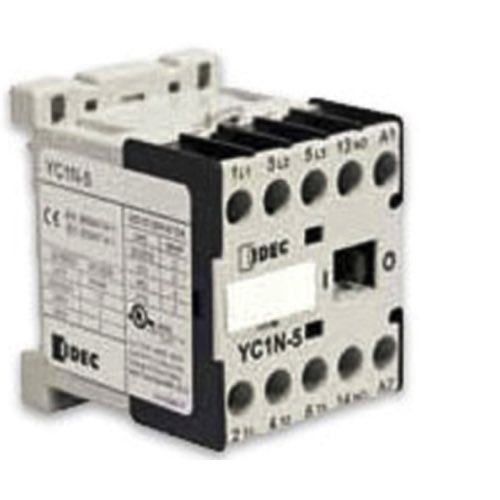IDEC Starter Contactors

IDEC starter contactors are engineered to deliver dependable and efficient motor control in industrial automation and machinery applications. RSP Supply carries a full line of IDEC starter contactors designed with compact IEC-style construction, making them easy to install while providing consistent performance in demanding environments. These contactors combine contactor and overload protection functionality to support safe motor operation and long service life.
Built with weld-resistant, cadmium-free silver alloy contacts, IDEC starter contactors offer reliable switching of motor loads while meeting modern environmental and safety standards. Integrated bimetallic thermal overload relays provide protection against prolonged overcurrent conditions, helping prevent motor damage and minimizing maintenance requirements. Models are available with both AC and DC coils to support a wide range of voltage and control circuit requirements.
Additional features such as coil surge suppressors and auxiliary contact blocks enhance system protection and control flexibility. IDEC starter contactors are suitable for direct panel mounting and integrate easily into standard motor control circuits. Their compact footprint, durability, and energy-efficient operation make them ideal for applications requiring reliable, long-term motor control performance.
FAQs
Q: What is the purpose of a starter contactor?
A starter contactor allows for safe, remote starting and stopping of an electric motor while working with an overload relay to protect the motor from overcurrent conditions.
Q: How does the overload relay protect the motor?
The thermal overload relay detects prolonged overcurrent and opens the control circuit, causing the contactor to shut off power to the motor.
Q: Are IDEC starter contactors available with different coil types?
Yes, IDEC starter contactors are available with both AC and DC coil options to accommodate different control voltage requirements.
Q: What materials are used in IDEC contactor contacts?
IDEC starter contactors use weld-resistant, cadmium-free silver alloy contacts for reliable switching and environmental compliance.
Q: How do starter contactors compare to soft starters or VFDs?
Starter contactors provide basic on/off motor control and overload protection, while soft starters reduce inrush current and VFDs add speed control and advanced motor management.
Why Buy IDEC Starter Contactors from RSP Supply
RSP Supply offers a comprehensive selection of IDEC starter contactors designed for reliable, compact motor control in industrial applications. Our products support efficient installation, durable performance, and integrated motor protection. Customers rely on RSP Supply for technically accurate motor control solutions, knowledgeable support, and dependable sourcing of IDEC automation components.

